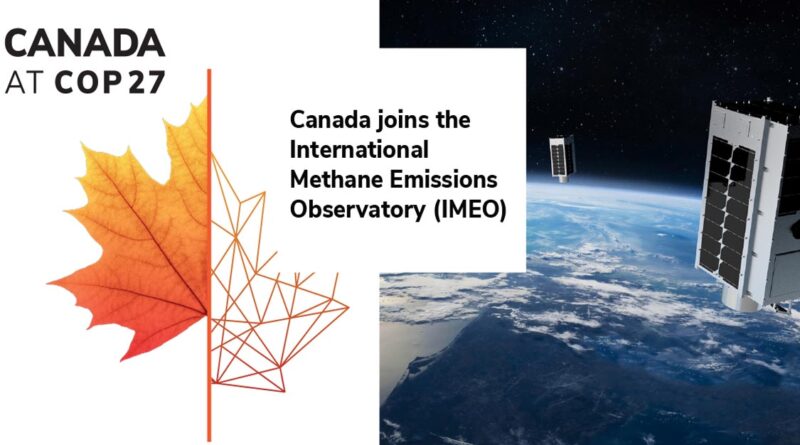So What Does this COP 27 Thing Mean Anyway?
By Fred Larsen – Special to SUNonline/Orillia
Representatives from the world’s nations met November 6 to November 20 in Sharm-el-Sheikh, Egypt for the Conference of the Parties to the United Nations Framework Convention on Climate Change (COP 27), to take action towards achieving the world’s collective climate goals as agreed under the Paris Agreement of 2015. The results? Good news, on the one hand, and disappointment on the other.
First the disappointment. The conference did not conclude with a commitment to phase out oil and gas – instead, addressing only reductions in the use of coal. Since emissions from the use of oil and gas must be reduced to meet any realistic targets for curtailing climate temperature increases, many in attendance came away disappointed. What also became evident during that conference was that the oil and gas industry – and the lumber industries around the world – were working hard behind the scenes to protect their industries, in spite of their negative effect on the planet’s ability to reduce greenhouse gases (GHGs). In spite of the greenwashing that seeks to portray both industries as doing their part to battle climate change, the lure of money and profits is clearly motivating their efforts to blunt the actions the international community is trying to take to protect the planet.
The Good News
What some are calling a breakthrough – was an agreement to establish a fund for loss and damage that will involve wealthy nations compensating developing states for the effects of climate change – droughts, floods, cyclones and other disasters. Countries like Somalia, currently experiencing drought that threatens the population with starvation; like Pakistan, that saw one third of its land mass flooded earlier this year forcing millions to leave their homes to seek safety; like the Caribbean islands that have been devastated by hurricanes. These are examples of countries whose peoples are already experiencing life-threatening consequences of climate change – even though they have contributed virtually nothing to the emissions that are causing the changes.
It is the developed countries of the world, in North America and Europe especially, that for two centuries have amassed wealth by the burning of fossil fuels, burning that led to emissions accumulating in the Earth’s atmosphere. The agreement commits the wealthy, developed countries of the world to help undeveloped countries deal with the effects of climate change and do what they can to mitigate the effects by transferring money to them. In simple terms, to help undeveloped countries pay for the damage they are experiencing and for their efforts to mitigate that damage. It seems only fair for those who have caused climate change to help those suffering the most from its consequences.
Matt Macdonald, a writer for The Tyee, in his article, Making Sense of COP 27 said, “there’s still a lot yet to clarify in terms of donors, recipients or rules of accessing this fund. It’s not clear where funds will actually come from, or whether countries such as China will contribute, for example.”
He goes on, “We should also acknowledge the potential gaps between promises and money on the table, given the failure of developed states to deliver on US $100 billion per year of climate finance for developing states by 2020. This was committed to in Copenhagen in 2009.” Then he notes, “the agreement to establish this fund is clearly a monumental outcome for developing countries most vulnerable to the effects of climate change—and least responsible for it.”
A second piece of good news from the conference was an agreement by 150 countries to reduce methane emissions by at least 30% by 2030. A recent Suzuki Foundation email notes.“ Methane is more than 80 times more potent than CO2 over its lifetime, so reducing methane emissions is one of the fastest, most cost-effective ways to slow global warming.”
Canada has been one of the countries leading the way in reducing methane emissions and has demonstrated leadership in its goal to reduce methane emissions in the oil and gas sector by 75 per cent from 2012 levels by 2030. In addition, measures to reduce the methane emissions from livestock and landfills are gaining momentum in Canada and other agricultural countries.
There was other good news as the World Economic Forum notes in its 10 Key Takeaways from COP 27… , Indigenous people played a larger role in the conference than ever before, that there was substantial progress recognizing the ocean’s role in the climate system, as well as positive developments in not only reducing the cutting of the world’s forests, but in ‘forest pledges’ to increase forestation in countries like Indonesia, Brazil, and others.
Somewhat belatedly, perhaps, Canada joined the Forest and Climate Leaders’ Partnership to prioritize the role of forests and land use in addressing climate change while building a healthy future for the planet. The partnership delivers on a commitment made by over 140 world leaders at COP26 to halt and reverse forest loss and land degradation by 2030, while delivering sustainable development and promoting an inclusive rural transformation. Prime Minister Trudeau has pledged to work with Indigenous people in Canada’s focus on the role of our forests and lands in mitigating carbon emissions.
So was the conference a success or not? COP 27 moved the world’s climate change actions – and Canada’s – forward in 2022, but the failure to identify oil and gas as the fossil fuels that the world must reduce – and fast – left United Nations Secretary-General António Guterres lamenting, “Our planet is still in the emergency room.”
The world can – and must – do better if the worst effects of climate change are to be avoided.




